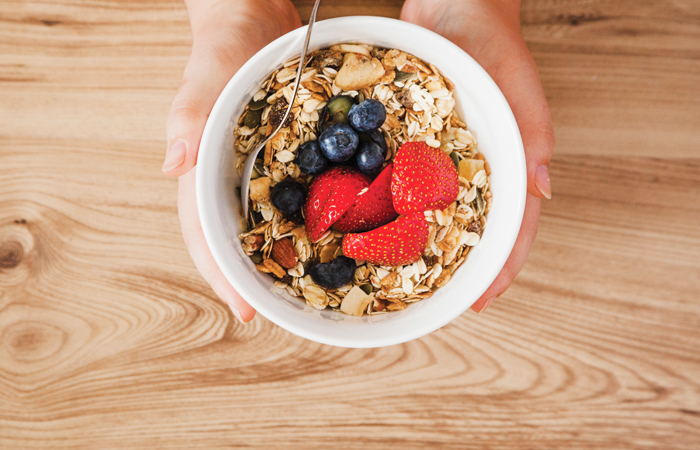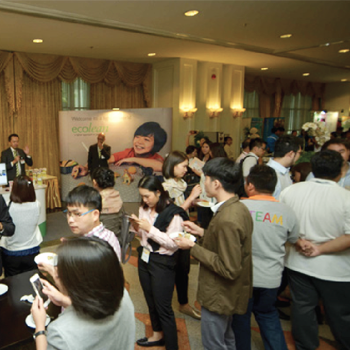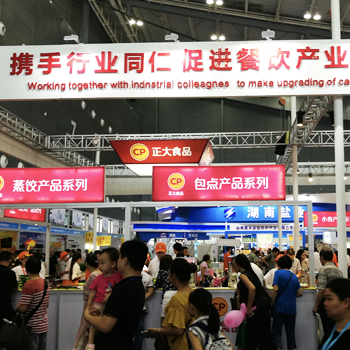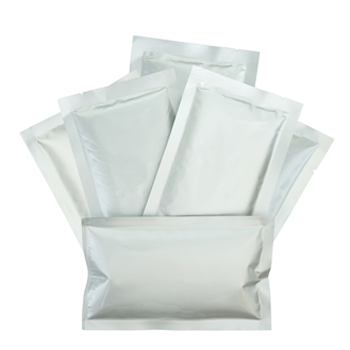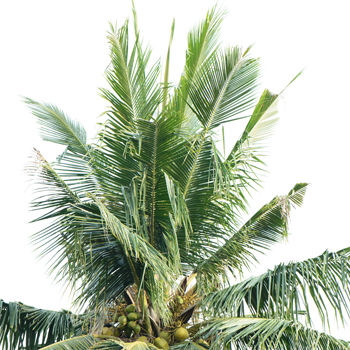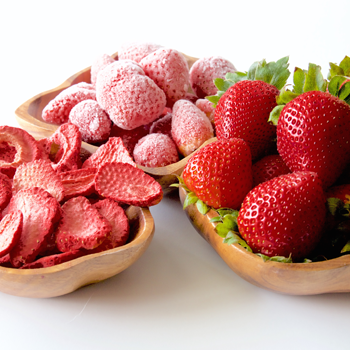แนวโน้มของผลิตภัณฑ์อาหารมื้อว่าง
Translated By: Editorial Team
Food Focus Thailand Magazine
ข้อมูลจาก Nutraceuticalsworld ระบุว่า ผู้บริโภคกำลังมองหาคุณสมบัติเชิงบวกของผลิตภัณฑ์ขนมขบเคี้ยว และส่วนผสมอาหารเพียงไม่กี่ชนิด ประหนึ่งว่า…ง่ายๆ แต่มีคุณค่า…
ชาวอเมริกันใส่ใจกับสุขภาพของตนเองมากขึ้น จึงสนใจส่วนผสมในอาหารที่บริโภคว่ามีและไม่มีอะไรบ้าง พวกเขามองหาผลิตภัณฑ์คลีนลาเบล และเริ่มเป็นผู้อ่าน (ฉลาก) ที่ดี โดยอ่านข้อมูลของส่วนผสมอย่างละเอียดถี่ถ้วนมากขึ้น
Darren Seifer กรรมการบริหารของกลุ่มบริษัท NPD ณ พอร์ท วอชิงตัน รัฐนิวยอร์ก กล่าวว่า “ผู้คนกำลังมองหาความบริสุทธิ์และความแน่แท้ พวกเขาจะกวาดสายตามองรายการส่วนผสมบนฉลากอย่างรวดเร็ว เพื่อดูว่ามีส่วนผสมอะไรที่ไม่รู้จัก หรือรู้จักแต่ไม่ได้มาจากธรรมชาติบ้าง นั่นเพราะต้องการส่วนผสมอาหารที่เรียบง่ายและคุ้นเคย”
เทรนด์โดนๆ ของผลิตภัณฑ์อาหารมื้อว่างเพื่อสุขภาพ
⋅แนวคาวๆ เข้ามาเยือน
ปัจจุบันกลุ่มชาวอเมริกันที่ตระหนักในเรื่องสุขภาพต่างหันหลังให้กับความหวานจากน้ำตาล ผู้ผลิตเริ่มรับรู้ความต้องการของผู้บริโภคด้วยการผลิตขนมหวาน ขนมขบเคี้ยว ที่ใช้น้ำตาลในสูตรลดลง และเพิ่มรสเผ็ดหรือมีรสชาติของอาหารคาวมากขึ้น ดังเช่น Kashi นำเสนอขนมขบเคี้ยวในรูปแบบแท่งหรือบาร์ 2 รสชาติ คือ Basil White Bean & Olive Oil และ Quinoa Corn & Roasted Pepper ทางด้าน Larabar เปิดตัวบาร์ซูเปอร์ฟู้ดออร์แกนิก มาใน 3 รสชาติเผ็ดร้อน คือ Coconut Kale Cacao, Hazelnut Hemp Cacao และ Turmeric Ginger Beet
บริษัทขนาดย่อมลงมาก็ยังหันมาเล่นในตลาดนี้ อย่างเช่น Mediterra นำเสนอผลิตภัณฑ์บาร์หลากหลายรสชาติ ได้แก่ Kale and Pumpkin Seeds, Bell Peppers and Green Olives และ Sundried Tomato and Basil ด้าน Ginger’s Healthy Habits เปิดตัว Veggie trail mix ออกมา 2 รสชาติ เป็นการนำผัก ถั่ว และเมล็ดธัญพืชมาผสมกัน
สำหรับคนรักเนื้อ ทาง Wild Zora นำเสนอ Meat & Veggie Bars หลายรสชาติ เช่น Mediterranean Lamb with Spinach และ Rosemary & Turmeric ส่วน Wilde Boldr มีบาร์ที่ผลิตจากเนื้อวัว เนื้อไก่งวง และเนื้อไก่ ที่ย่างให้สุกอย่างช้าๆ “ทำจากส่วนผสมที่หาได้ในครัวของคุณเอง”
⋅ว่าด้วยผลไม้ล้วนๆ
KIND เปิดตัวผลิตภัณฑ์บาร์ 4 ชนิด ภายใต้ชื่อ Pressed by Kind ซึ่งผลิตจากผลไม้ และยังมีผลิตภัณฑ์ That’s It has That’s It bars ที่เป็นผลไม้ล้วนๆ
Jordan Rost รองประธานฝ่ายข้อมูลเชิงลึกของผู้บริโภคแห่ง Nielsen กล่าวว่า แม้ผู้บริโภคจะพยายามหลีกเลี่ยงน้ำตาล แต่น้ำตาลในผลไม้ก็เป็นสิ่งที่ยอมรับได้ “ไม่มีอะไรที่จะแย่โดยสิ้นเชิง และผู้บริโภคก็ยอมรับว่าผลิตผลสดเป็นแหล่งที่ดีของสารอาหาร”
⋅ทางเลือกแบบชิพๆ
ผลิตภัณฑ์บาร์ไม่ใช่รูปแบบเดียวของนวัตกรรมขนมขบเคี้ยว ผลิตภัณฑ์ในรูปแบบแผ่นหรือชิพ (Chip) ตลอดจนรสชาติใหม่ๆ ก็ยังร้อนระอุในเส้นทางของทางเลือกนี้ด้วย อย่างเช่น ป๊อบคอร์นสำเร็จรูป (Pre-popped popcorn) ซึ่งขายดิบขายดีใน 4 ปีที่ผ่านมา จากข้อมูลของ Nielsen พบว่าในเดือนตุลาคม 2560 มียอดขายเพิ่มขึ้นร้อยละ 17 จากปี 2559 โดยเพิ่มขึ้นจากร้อยละ 12 ของปีก่อนหน้า
NatureBox นำเสนอ Pop Pops ป๊อบคอร์นที่ทำให้พองบางส่วน มี 2 รสชาติให้เลือก ส่วนแบรนด์ Open Road Snacks ก็เปิดตัว Poplets ซึ่งทางบริษัทกล่าวว่า “ส่งมอบความพึงพอใจ และรสชาติเยี่ยมของข้าวโพดที่มีส่วนผสมของไฟเบอร์มากขึ้น และไขมันกับแคลอรีที่ลดลง” ในเดือนตุลาคม Ips Snack ได้วางจำหน่ายป๊อบคอร์น 2 รสชาติ ในชื่อ Ips Pop ซึ่งเพิ่มเวย์โปรตีนเข้าไปด้วย
“ด้วยความห่วงใยในปัญหาสุขภาพอย่างโรคอ้วนและโรคเบาหวานชนิดที่ 2 ที่เพิ่มสูงขึ้น เป็นแรงผลักดันให้ผู้บริโภคเพิ่มความระมัดระวังในการเลือกซื้ออาหารทานเล่นมากขึ้นด้วย นี่เป็นผลดีที่ทำให้ขนมขบเคี้ยวทางเลือกที่ทำจากถั่วชิกพีได้รับความสนใจ” Mr.Vierhile อธิบาย
